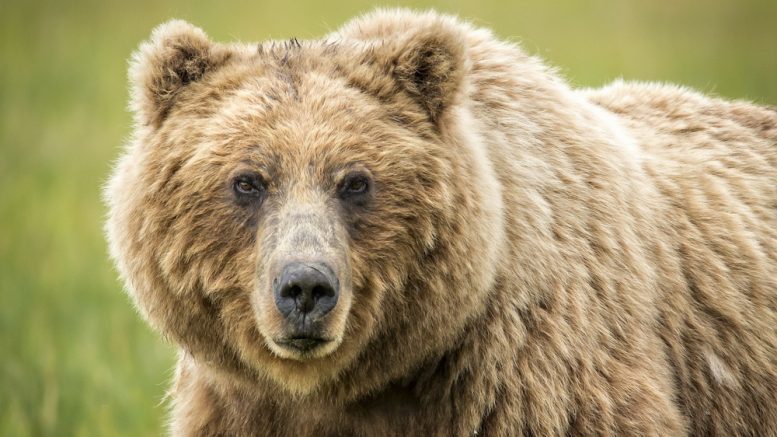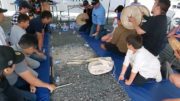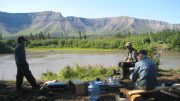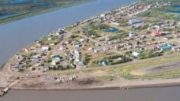The Member of the Legislative Assembly for the Mackenzie Delta wants officials from the Department of Environment and Natural Resources (ENR) to do something about what he says is an increase in grizzly bear numbers in the Hamlet of Aklavik.
Frederick “Sonny” Blake raised the issue in the Legislative Assembly on Tuesday.
“We have a grizzly bear problem in Aklavik. At the moment, we have up to 13 grizzly bears hanging around at the dump site. Also, as it is starting to get dark now, the bears are starting to bother around the community. This is a threat to the community, as bears are very unpredictable,” Blake said. “My constituents want some action taken to either relocate or put some of the bears down to detour the bears from hanging around the community. In the past, the ENR officer was able to put down problem bears and hire residents to keep them out. From what I was told, this can only be done when the bear is a threat. I think it is pretty clear that 14 grizzly bears are a threat. Let’s not wait until something serious happens. Let’s take some action to keep Aklavik safe.”
Robert C.McLeod, the ENR minister, says he’s aware of the situation in Aklavik and notes that it’s not the only Northern community dealing with problem bears this summer.
His hometown of Inuvik is dealing with bears as well.
“We have had some incidents in Inuvik with grizzly bears, particularly around the garbage dump. I have seen some pictures, actually, of them right outside an apartment building, just down the road from where I am at,” McLeod said. “I have actually seen one out at the dump when I was throwing some garbage away three weeks ago. It has been a bit of an issue.”
McLeod adds the ENR officer in Aklavik will continue to monitor the situation closely to ensure that the public safety of the residents of the hamlet is not compromised.
Blake wanted to know whether the minister thinks increasing the number of tags for hunters in the area would help bring the grizzly population under control.
“I think one of the reasons that they put the tag system in place was a number of years ago, when there was no tag system, there was a large amount of bears that were harvested, and I think there was a belief at that time, and this might have been 10 or 15 years ago, that, had they not put restriction on it, then that might have hurt the grizzly bear population quite a bit more,” McLeod responded. “I think what we are seeing today is a result of some of those measures that were put in place to try to protect some of the grizzly bear population. We would have to work with our co-management partners, we would have to work with the Aboriginal organizations up there to see if there maybe is a way that we can increase the number of tags that are distributed every year.”
McLeod says he’s not certain of the cost differential between putting bears down or relocating them.
Meagan Wohlberg, spokesperson for ENR, says it’s actually been a slow year for bear complaints in the Beaufort Delta region, with 32 reported.
She adds bears at the Aklavik landfill typically remain in that location and do not make their way into the community.
“ENR responds to bear reports as they are received, and not all reports require action by ENR officers,” Wohlberg told CKLB in an email. “When it comes to addressing bears that are a risk to public safety, ENR officers respond by attempting to deter the bear, followed by live-trapping and release when appropriate, and destroying the bear as a last resort.”
Aklavik and Inuvik are just two of several Northern communities reporting problems with bears this season.
Residents have expressed concerns noting that it’s berry picking season and that could easily increase the chance of a bear encounter.
John has been in the broadcast journalism industry since the 1980s. He has been a reporter in Yellowknife since 2012 and joined CKLB in January of 2018.
John covers the crime and court beat as well as reporting on other areas including politics, business, entertainment and sports.
He won seven national community newspaper awards while he was a journalist with Northern News Services Limited (NNSL).
John worked in Ontario before coming North including stints as a TV sportscaster in Peterborough and senior news writer for CBC and CTV in downtown Toronto.









